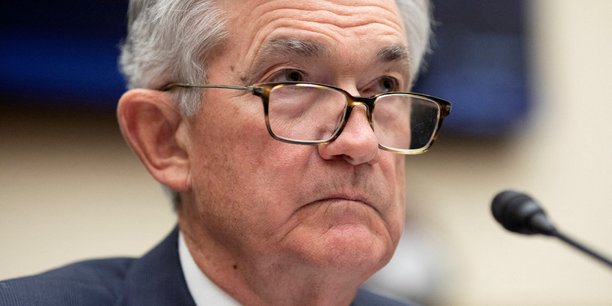The US Federal Reserve is about to deliver another hammer blow to the US economy, and by extension, the world. From a first rise in rates that began in mid-March between 0.25 and 0.50%, i.e. an increase of 0.25 percentage point, the institution is expected this Wednesday to go even more frankly in its desire to stop the influx of cash participating in the rise in prices for American homes, in addition to the tension on the energy market. The Fed is due to announce a hike of half a percentage point, the first of this magnitude since May 2000.
One thing is certain, while its European counterpart, the ECB, has chosen to leave its key rates (0.5%, 0% and -0.5%) unchanged for almost eight years for the time being, – while inflation rate reached 7.5% in March year on year in the euro zone – the Fed, in an intense debate on the pace of tightening to adopt, opted for acceleration in the face of supporters of support for the growth.
But in the United States, inflation has reached +8.5% over one year, according to the CPI index. Of not seen since December 1981. Except that this return to the right path – too brutal for some – could also lead the world’s largest economy on the road to recession. Already, thee US gross domestic product even recorded a contraction of 1.4% in the first quarter. In France, the slowdown and the specter of stagflation is also palpable with 0% growth in the first quarter, according to INSEE.
In search of the “neutral” range
So far, Fed leaders have believed they can bring inflation back to their 2% target without raising rates above 3% to avoid stalling demand. This is, they say, a “neutral” range that will neither stimulate nor slow economic growth.
In addition to the surge in prices, the president of the powerful institution, Jerome Powell deplores a job market which is “not healthy”. Indeed, the unemployment rate is close to its pre-pandemic level (3.6% in March compared to 3.5% in February 2020). And it should remain unchanged in April. But companies have faced labor shortages and mass quits for months.
To attract candidates and retain employees, companies raise wages, which has the effect of fueling inflation.
Even stronger in June?
The Fed, however, signaled its willingness to make six more hikes this year, or as many as meetings by the end of 2022. It was Jerome Powell, who himself announced on April 21 that it was “absolutely essential” restore price stability and raise rates “rapidly”.
A majority of pundits are now pricing in another, even more aggressive three-quarters percentage point hike at the June meeting, which would be a first since 1994.
The bogged down Russian-Ukrainian war is weighing on European growth, driving up global energy prices and jeopardizing global food security. At the same time, China’s zero-tolerance policy against Covid has compounded problems on global supply chains.
Feverish markets
The day before, European stock markets ended up after a session of indecision. Paris gained 0.79%, Frankfurt 0.72% and Milan 1.61%. London, which was closed on Monday, a session where European stock markets had fallen significantly, only gained 0.22%.
Wall Street concluded a little above the balance. The Dow Jones gained 0.20%, the Nasda 0.22% and the S&P 500 advanced 0.48%.
(With AFP)


